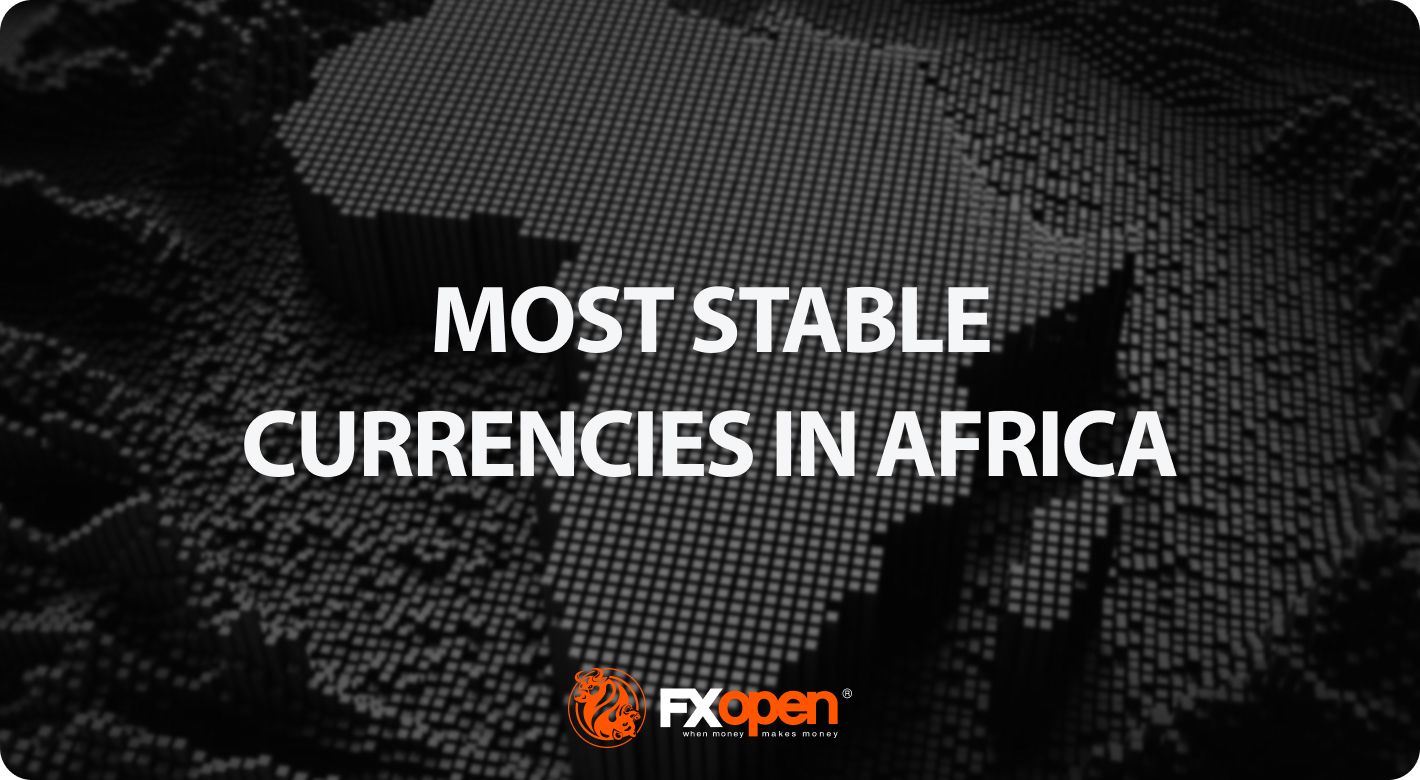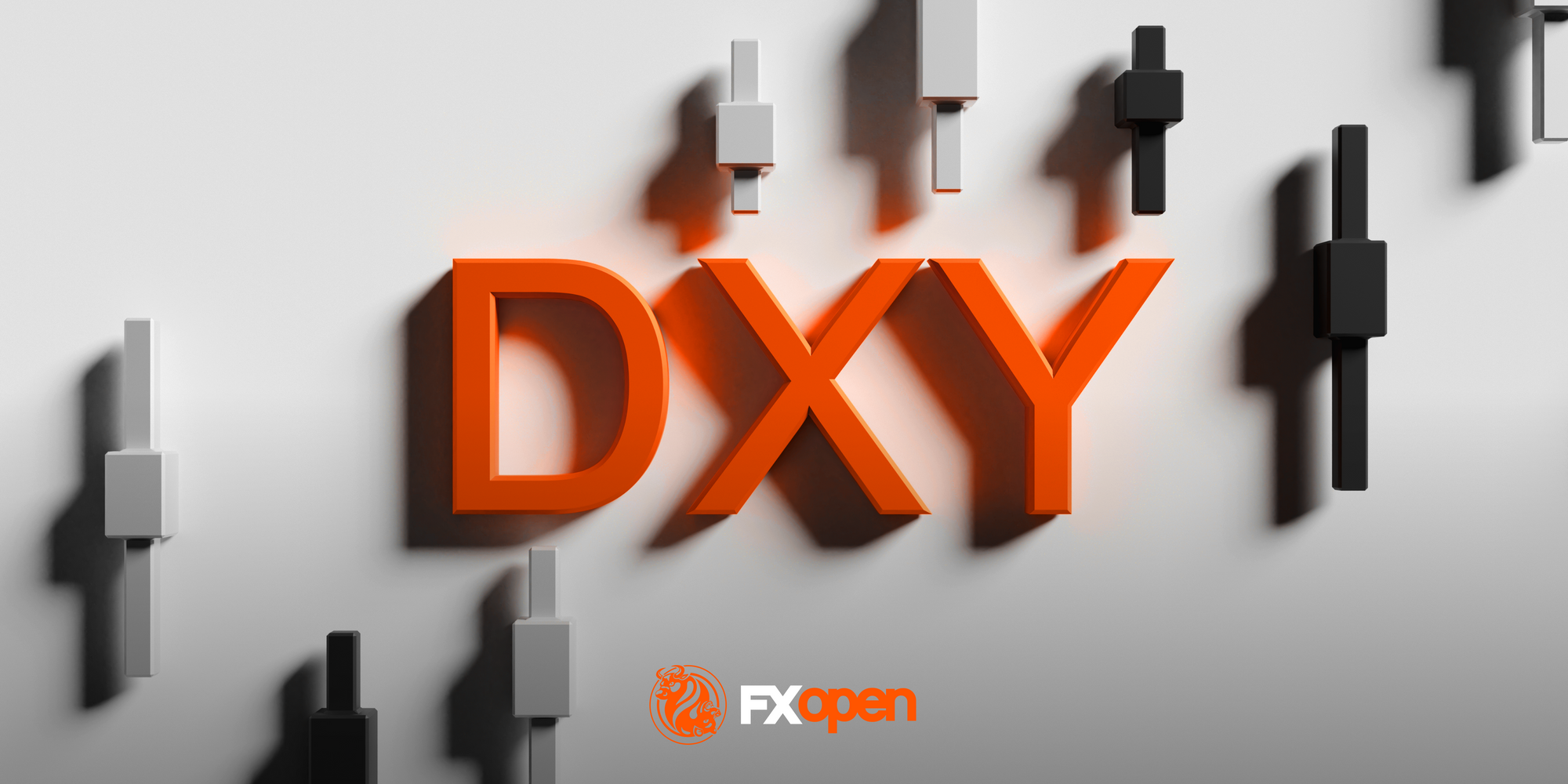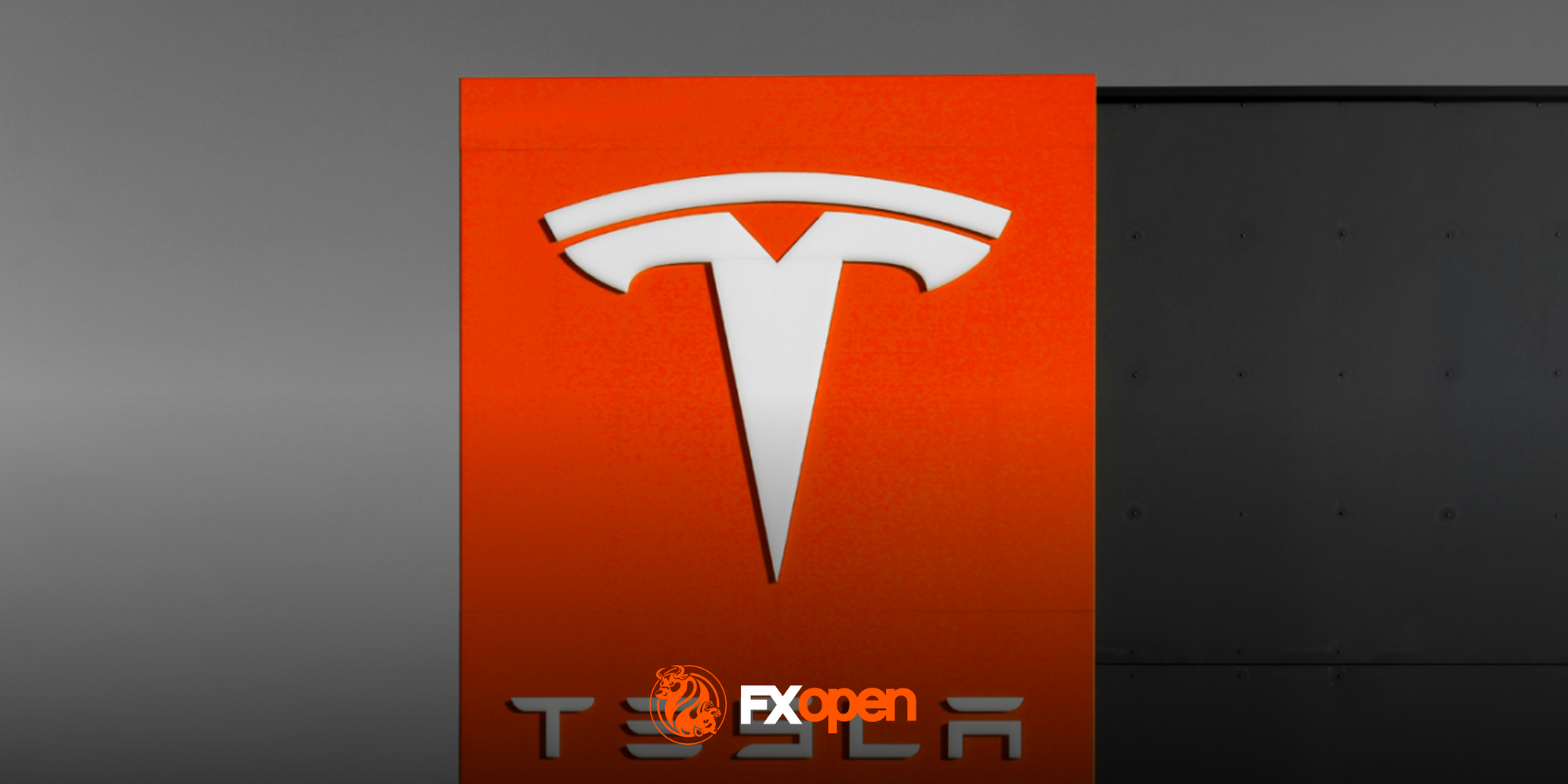FXOpen

Africa is a continent with a diverse range of currencies, each with its own unique characteristics. Some currencies are more stable than others. It’s important to note that currency stability depends on a complex combination of economic, political, and global factors. This FXOpen article explores what contributes to the stability of Africa’s strongest currencies and what their rates are in the forex market today.
8 Most Stable Currencies in Africa
Below, you’ll find a list of the top eight most stable currencies in Africa, but note that stability is an ever-changing metric, so there is no absolutely stable currency in the world. As the US dollar continues to serve as the global standard for assessing currencies, this ranking of the most stable currencies in Africa is set against the USD.
*The rates are effective on the 11th of November, 2023.
8. South African Rand (ZAR)
Exchange rate: 1 ZAR = 0.0534 USD
The South African rand, symbolised as ZAR, stands out as one of the most stable currencies on the African continent. Its stability is attributed to South Africa’s well-diversified economy, robust financial institutions, and prudent fiscal policies. The South African Reserve Bank plays a crucial role in maintaining currency stability and is responsible for the exchange rate of South Africa’s currency.
The Namibian dollar and the Lesotho loti are pegged to the South African rand. This scheme helps to maintain a stable exchange rate between the three countries.
7. Eritrean Nakfa (ERN)
Exchange rate: 1 ERN = 0.0666 USD
The Eritrean nakfa is the currency of Eritrea. The fixed exchange rate system provides stability for the nakfa against fluctuations in the foreign exchange market, although it also makes the currency susceptible to external shocks and requires strict monetary and fiscal discipline. Eritrea’s growth performance is marked by significant volatility due to its dependence on a predominantly rain-fed agriculture sector, accounting for about one-third of the economy.
6. Seychellois Rupee (SCR)
Exchange rate: 1 SCR = 0.0686 USD
The rupee is the official currency of Seychelles. This country had the highest GDP per Capita in Africa as of 2022. Its investment policies encourage the development of Seychelles’ natural resources, improvements in infrastructure, and increases in productivity levels. This contributes to the stability of the rupee. Despite the government’s attempts to diversify the economy, activity remains focused on fishing and tourism.
5. Botswana Pula (BWP)
Exchange rate: 1 BWP = 0.0736 USD
The Botswana pula is another stable currency in Africa. The country has a strong economy, which has helped to keep the currency on track. Known for its well-established political environment, Botswana has the potential to have the most stable African currency in the future. The country’s commitment to fiscal discipline and prudent management of its diamond-driven economy contribute to the stability of the BWP.
4. Ghanaian Cedi (GHS)
Exchange rate: 1 GHS = 0.0841 USD
The Ghanaian cedi is one of the leading currencies in sub-Saharan Africa and is considered to be one of the most stable West African currencies. The country’s efforts to diversify its economy, coupled with sound financial management, allow it to increase the stability of its currency. Due to the country’s reliance on exporting raw materials and importing finished products, the cedi is sometimes put under pressure. Ghana may apply stricter expenditure controls to improve the veracity of budget usage.
3. Moroccan Dirham (MAD)
Exchange rate: 1 MAD = 0.0979 USD
In North Africa, the Moroccan dirham stands as a stable currency. Morocco’s diverse economy, based on agriculture, mining, tourism, and manufacturing, provides a solid foundation for the stability of the dirham. The MAD has a managed floating exchange rate regime, pegged to a basket of currencies (60% to the euro and 40% to the US dollar). The exchange rate of the dirham is highly dependent on commodity prices, especially phosphate and agricultural products, as well as tourism earnings.
2. Libyan Dinar (LYD)
Exchange rate: 1 LYD = 0.2055 USD
The second strongest currency in Africa is the Libyan dinar. Previously, Libya has experienced significant instability due to political uncertainties. The country’s institutional framework has helped it through a period of significant macroeconomic volatility and turmoil. Libya’s economy is reliant on oil and gas production, and the country has experienced exceptional swings in oil production and revenues. It’s expected that the state will carefully regulate the LYD exchange rate.
1. Tunisian Dinar (TND)
Exchange rate: 1 TND = 0.3179 USD
The highest currency in Africa is the TND. The Tunisian dinar is also considered the most stable currency in the region. It’s prohibited to export the TND freely or convert it into other currencies. An active import and export policy helps maintain the country’s economic performance. Still, the dinar can experience significant instability due to political events.
The Use of the US Dollar, the Euro, and the British Pound in Africa
The US dollar is widely used around the world as a quasi-currency, including in a number of African countries. You may encounter the US dollar in South Africa, Liberia, and Zimbabwe. It may be adopted either alongside or instead of the domestic currency of some countries in the region. Most countries in Africa still rely on US dollar-denominated debt.
The euro is the official currency of several EU member countries. In Africa, some North African countries have economic ties with the EU and may use the euro in cross-border transactions. Additionally, the euro is accepted in tourist areas, but its use is not as widespread as the US dollar.
The British pound has historical significance in Africa, particularly in former British colonies. The pound was the currency of British West Africa, including Nigeria, the Gold Coast (now Ghana), Sierra Leone, and the Gambia. It is used for trade purposes even today but isn’t common for daily transactions.
Final Thoughts
Understanding the stability of African currencies is essential for investors and businesses operating in the region. The economic, political, and global factors influencing currency stability are complex. From the South African rand to the Tunisian dinar, each currency’s stability is rooted in economic strengths, prudent fiscal policies, and commitment to financial discipline.
Still, these aren’t the most popular currencies in the forex market. If you are interested in more actively traded pairs and other instruments, including stock, index, commodity, and cryptocurrency* CFDs, you can open an FXOpen account. On the TickTrader trading platform, you’ll find price charts for various assets. Explore the vibrant landscape of currency trading with FXOpen.
*At FXOpen UK and FXOpen AU, Cryptocurrency CFDs are only available for trading by those clients categorised as Professional clients under FCA Rules and Professional clients under ASIC Rules, respectively. They are not available for trading by Retail clients.
This article represents the opinion of the Companies operating under the FXOpen brand only. It is not to be construed as an offer, solicitation, or recommendation with respect to products and services provided by the Companies operating under the FXOpen brand, nor is it to be considered financial advice.
Stay ahead of the market!
Subscribe now to our mailing list and receive the latest market news and insights delivered directly to your inbox.








